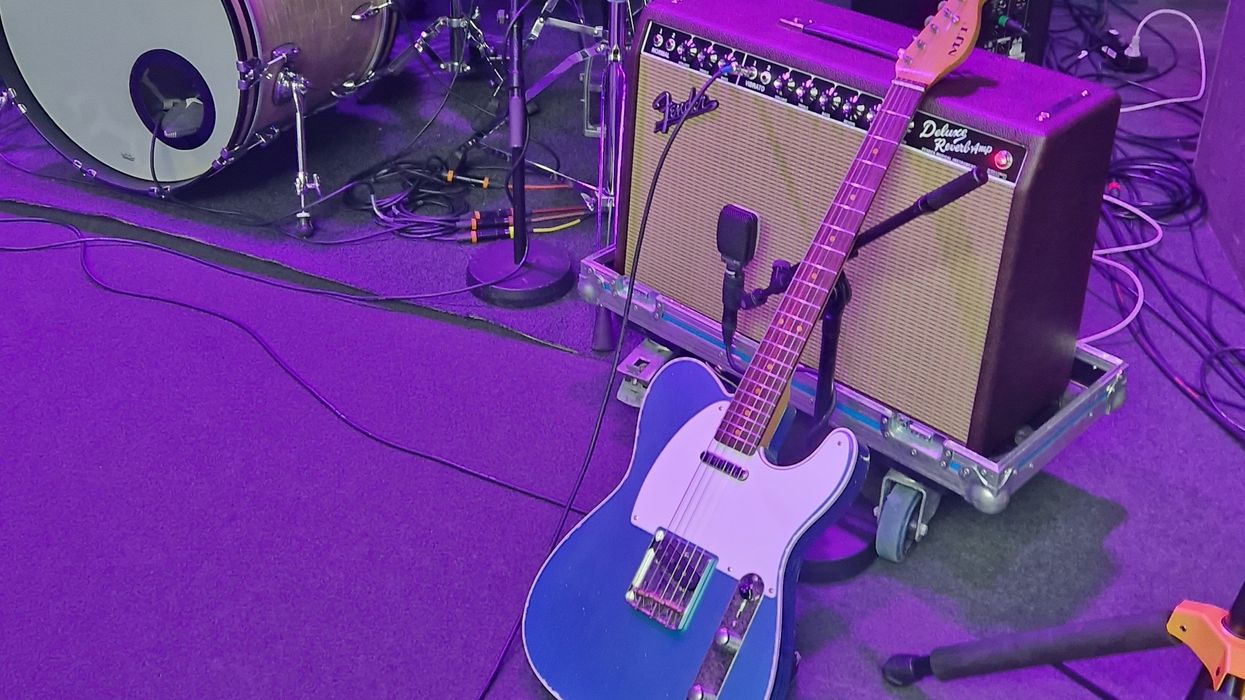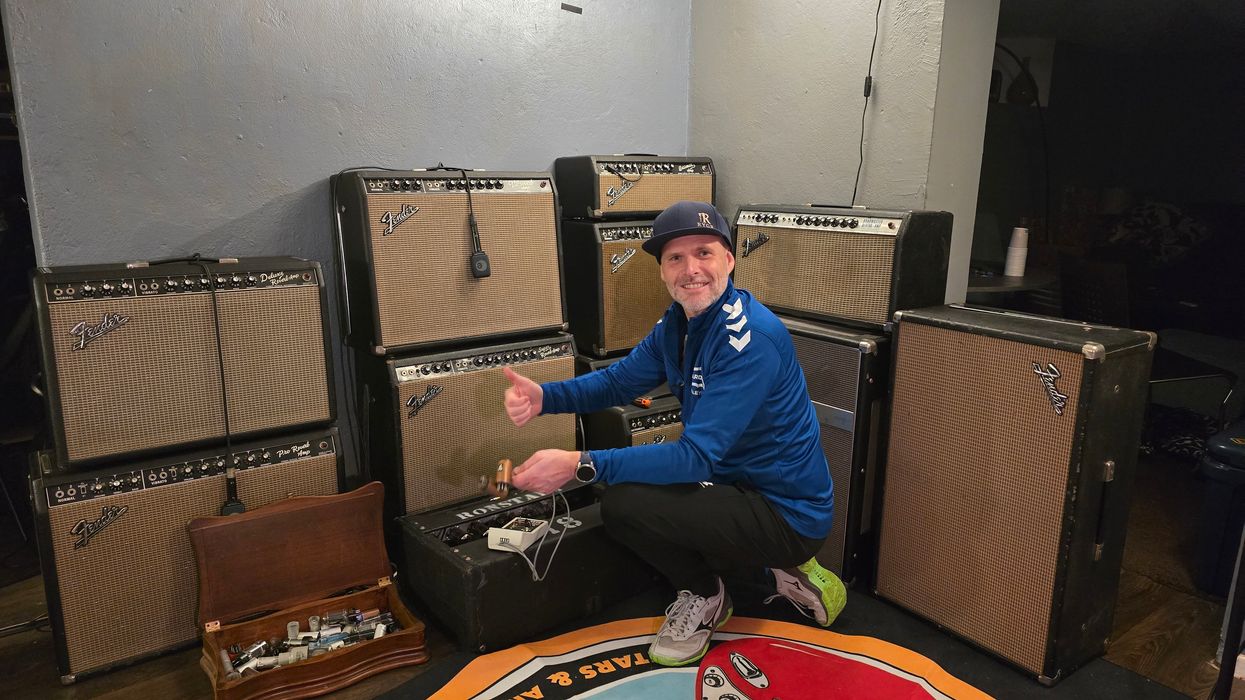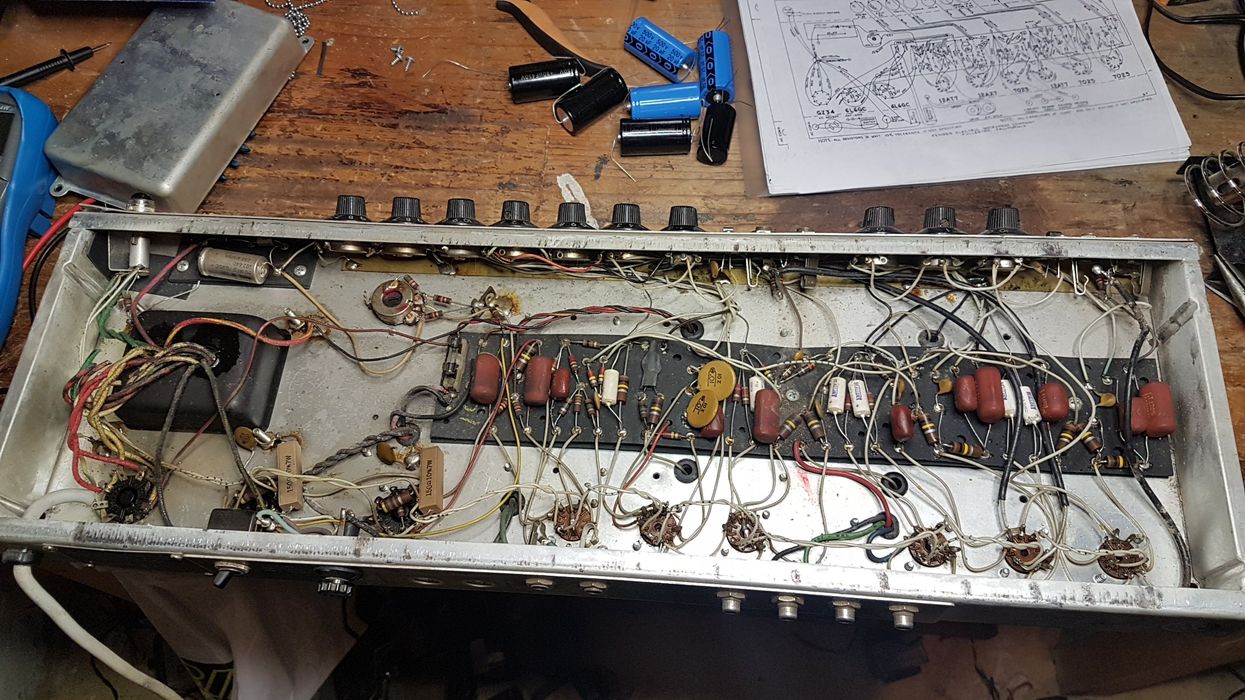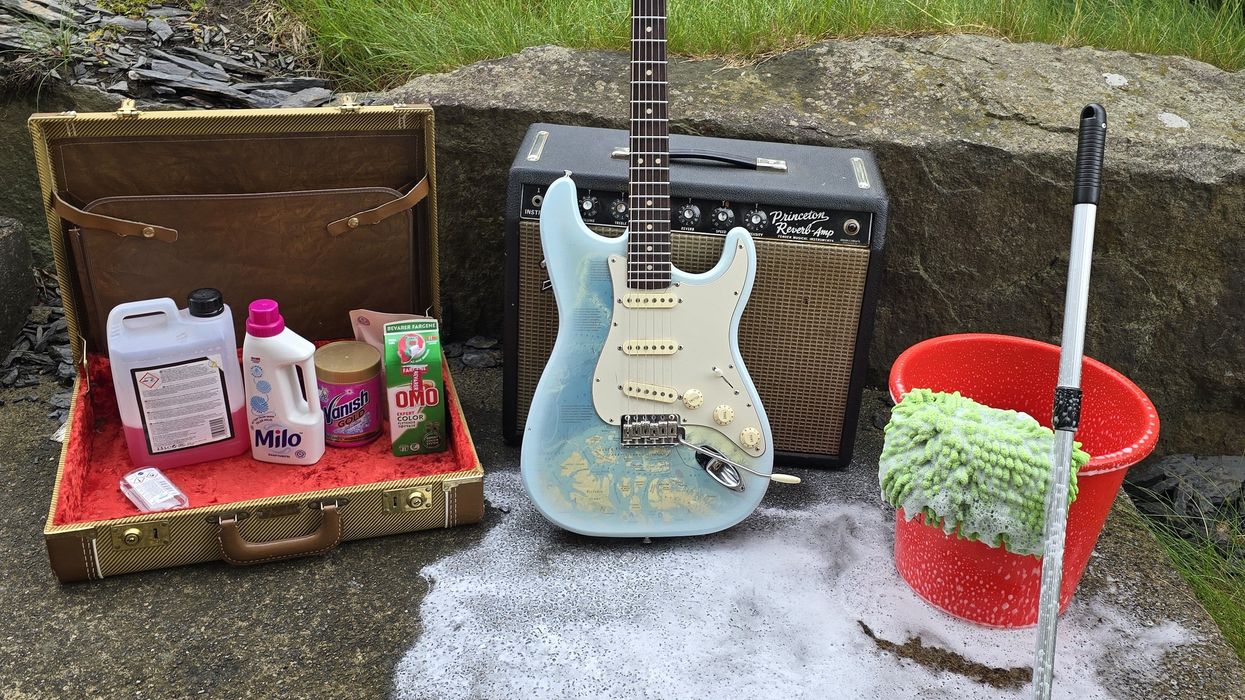[Originally published: 9/2/2019]
You might guess from the title of this column that I love Fender amps. And you’d be right. From a musical and engineering perspective, I think vintage Fender blackface amps are the best ever made. With bright, American-style speakers, they deliver pure and natural tone. Their channels, with volume and EQ, are intuitive for any guitar, bass, or keyboard player. It’s impossible to not find a decent tone in less than 10 seconds. From a technical perspective, their handmade tube-based circuits are simple, and they were built with high-quality components. And today, there are easily available parts and schematics, and an abundance of other online technical information, which makes it possible for many techs and players—including you—to service these amps.
Classic Fender blackface amps have been an inspiration for an entire industry. They’ve appeared on countless stages and an incredible amount of great albums by legendary performers. Why? Mostly tone and clean headroom. So, for this debut column, let’s discuss what we can do to make those two factors work best for you via tubes.
Reverb and tremolo were the main functional innovations in Fender’s blackface line. The king of blackface amps, the Twin Reverb, produced 85 watts from four 6L6 tubes and had enormous power and output transformers, a non-sagging diode rectifier, and two powerful 12" speakers. The 4x10 dual-6L6 40-watt Super Reverb has half that power, a softer tube rectifier, and smaller transformers. Still, the massive array of four 10" speakers is screamingly loud and sometimes difficult to handle for its weight (65 pounds), size, and volume. A 4x10 is more directional and scooped in the low mids than a 2x12. So a guitar plugged into a Super Reverb can end up competing with the bass. Experience is required to tame these amps. Once you know how to handle them, you will be rewarded with an overwhelming and physical sonic experience.
In the blackface world, the 1x12, double-6V6 22-watt Deluxe Reverb’s advantage is that it’s small and light, at 42 pounds. It breaks up earlier than its bigger relatives due to the less powerful 6V6s, small transformers, and a small speaker cabinet. Additionally, the original Oxford 12K6-5 speaker farts out early and is very weak, although it also delivers a true signature vintage Fender sound. And who doesn’t want their amp to break up easily these days? I have kept the Oxfords in my Deluxe amps. Before the internet, few people knew they could replace the 6V6s with 6L6s and replace the Oxford to double the Deluxe’s volume.
The V6 12AT7 phase inverter tube can be replaced with a 12AX7 to reduce headroom in large 6L6 amps.
Via my website, fenderguru.com, I often get questions about how to achieve different tones in blackface amps run at lower volumes. The answer often lies in the tubes. So let me share some simple tube tricks that will help you develop an understanding of how tubes function—and how they can be used to affect changes—in the typical two-channel AB763 circuit in the Twin, Super Reverb, Vibroverb, Pro, Vibrolux, and Deluxe amps of the original blackface era.
The tubes in these circuits are typically identified as V1 through V10, looking at the back of the amp from right to left. Here are some tricks:
- The V1 12AX7 tube in an amp’s normal channel can be removed for more preamp gain and reduced headroom in the vibrato channel. It can also be replaced by weaker tubes, like 12AY7s or 5751s, for less volume/gain. I always pull out this V1 since I use the vibrato channel and want solid preamp gain, which the single V2 delivers.
- The V3 12AT7 reverb driver for the vibrato channel can be replaced with a 12AU7 for less reverb and improved reverb knob control.
- If you’re only using the normal channel, think about removing the V2 through V5 tubes for the vibrato channel. That will give you more gain and headroom in the normal channel. (FYI, the 12AX7 in the V5 position is the tremolo tube.)
- The V6 12AT7 phase inverter tube can be replaced with a 12AX7 to reduce headroom in large 6L6 amps.
- Several alternatives to 6L6 power tubes exist. I mostly use 6L6GCs. In a Twin Reverb, you can pull either the V7 and V10 or V8 and V9 tubes for half power and earlier breakup. Ideally, but not totally necessary, you should disengage one speaker to match the impedance change.
- In a blackface Deluxe, the GZ34 in the V9 slot is the rectifier tube. If I want reduced headroom and more sag, I use a 5U4GB.
And there you have it: You’re on your way to becoming a Fender guru, too!






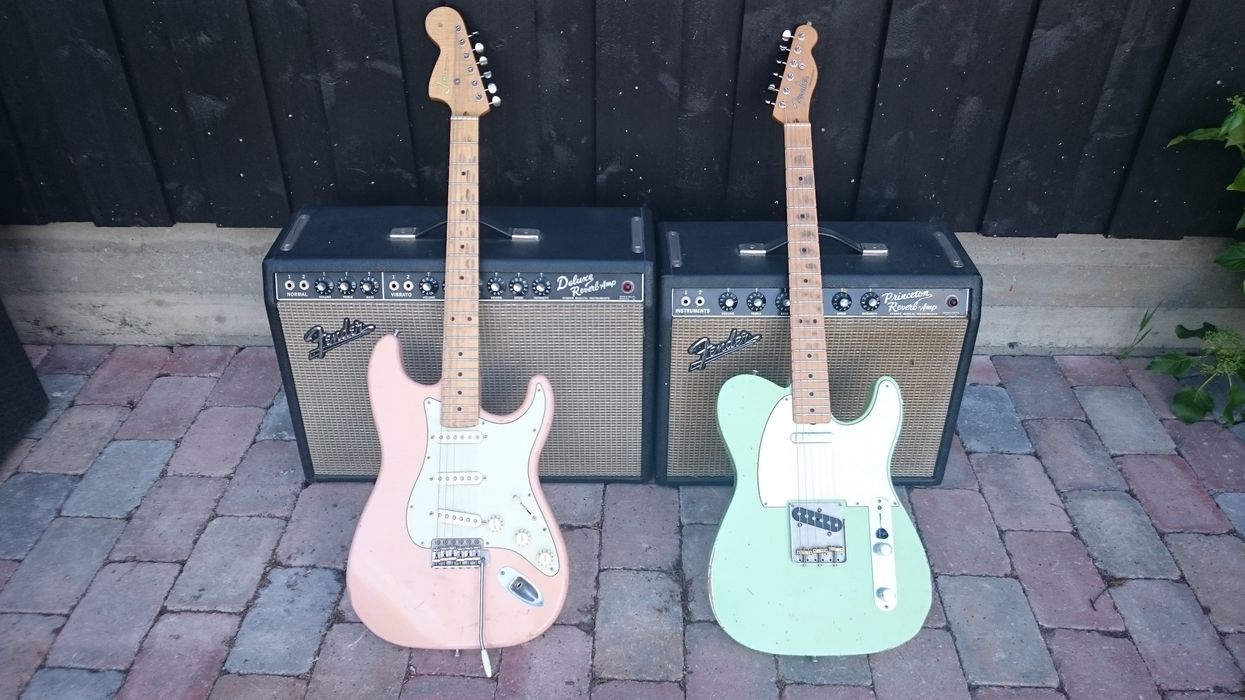
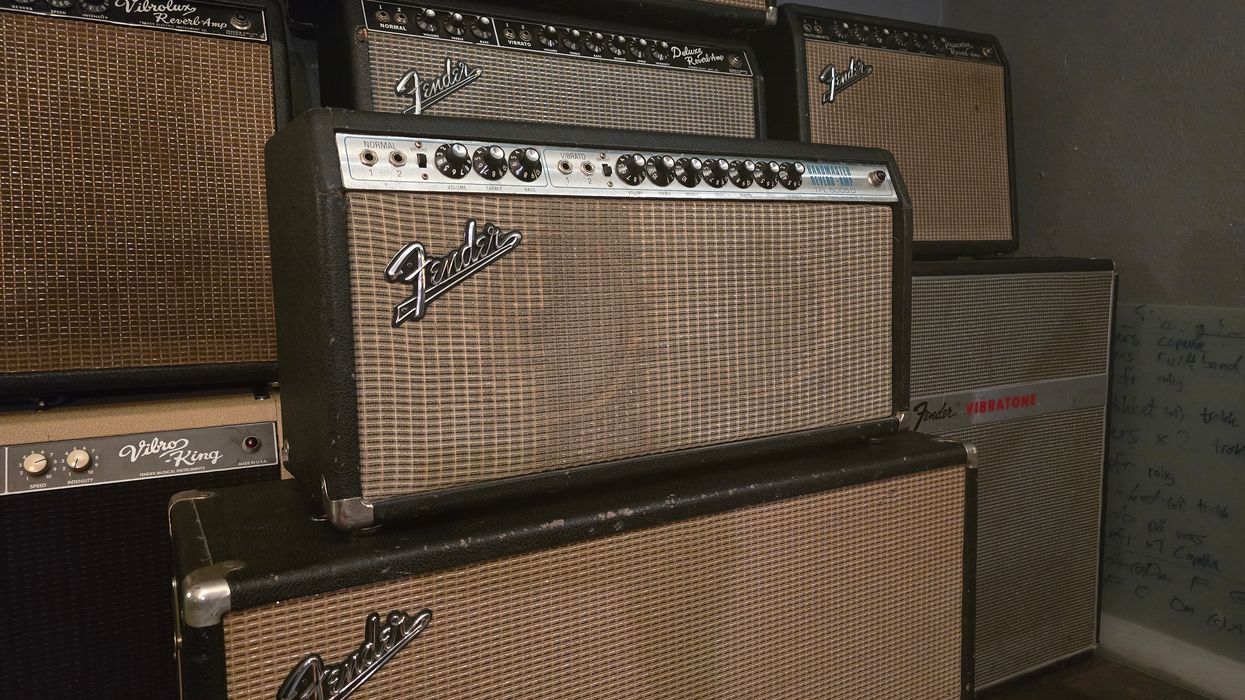
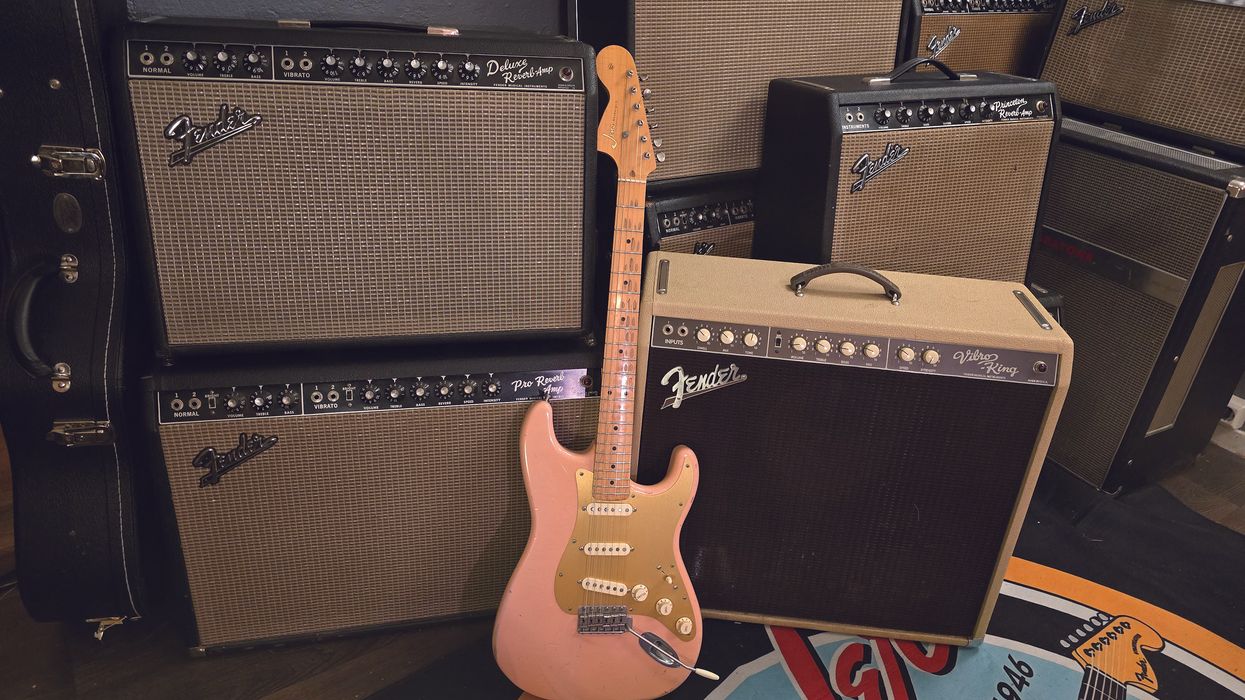


![Rig Rundown: Russian Circles’ Mike Sullivan [2025]](https://www.premierguitar.com/media-library/youtube.jpg?id=62303631&width=1245&height=700&quality=70&coordinates=0%2C0%2C0%2C0)



